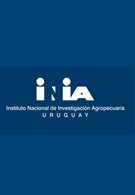ABSTRACT. This research was conducted during two irrigation seasons (2014?2015 and 2015?2016) in Salto, Uruguay. This growing region is characterized by high annual precipitation and periods of soil water deficit of different intensities. This characterization casts much doubt to soybean growers regarding whether supplementary crop irrigation is useful for maximizing soybean yield, maintaining stable productivity and increasing profit margins. Three supplemental irrigation treatments in addition to a rainfed treatment were evaluated for their effects on soybean growth, development and yield with respect to the vegetative and reproductive stages. The results show that supplemental irrigation during the reproductive stage (R1?R8) has a positive effect on soybean growth and development, regardless of treatment. The total dry matter and leaf area index were between 8% and 40% higher in irrigation treatments compared with rainfed conditions. Actual evapotranspiration data, estimated with soil moisture sensors, showed that the crop coefficients (Kc) used in these experiments can be generalized for use in the region. During both cropping seasons, the rainfed treatment produced the lowest grain yield, with a 35% reduction in yield compared with that of the irrigated treatments. However, the water use efficiency values were inversely related to the amount of water applied. The profit margin showed that supplemental irrigation is useful in conditions during which the soybean price was greater than 350 U$D per ton, given the hypotheses considered. In the northwestern region of Uruguay, no irrigation would be the best option when the soybean price is less than U$D 350 or when rainfall is more stable during crop growth seasons. © 2017 Elsevier B.V. All rights reserved.

